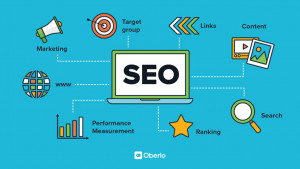You may be developing the first website for your small business or optimizing the existing one. As an entrepreneur, it is critical that you understand the concepts that go into making a successful small business website.
After all, the reason you are building your small business website is to accomplish all this, and more: business representation, capturing leads, closing sales, reach the top on SERPS (Search Engine Result Pages), and connecting seamlessly to all the digital platforms your business depends on.
As the prime owner of the success or failure of your business, you have to pay attention to everything: choosing site content, writing and designing the pages, connecting with the marketing tools in use, testing, and most importantly – not spending a million bucks or crazy long hours to get from point A to B for the blast-off.
Here, we will take you through eight important factors for the success of your small business website – so you can go from “my small business needs a website” to “my site is creating miracles for my small business”. We’ll be covering content strategy, website design, and critical marketing concepts, so you get a comprehensive picture.
1. Website strategy
A well thought out website strategy is at the core of every successful small business website. With a good plan, your site is all set to fulfill your business objectives, such as meeting lead generation targets. Your website strategy should address these concerns:
- What are the goals of your website (Give the list items a rank and priority)?
- What does your audience look like? (Demography, preferences, shopping habits, etc.)
- What functionality will your site offer? (Be clear on what is essential and what is “nice to have”)
- What information is the website going to offer to the site visitors?
- Are there any other online properties you’d like your website connected with? (Consider landing pages, blogs, social media, and other 3rd party outlets)
- What parameters will you use to measure the success of your website? (Ensure use of proper tools for web analytics)
2. Clear website structure
Once the overall goals and blueprint are ready, the next goal is to make it easy for the visitors of your website to look for and navigate the content.
It is recommended that you use theme and importance to bucket your website’s content. Try to draw a physical plan while creating a high-level framework. A lot of people get a brain freeze at this stage, so make sure you “visualize” the structure of your website.
Here is one strategy for you to consider:
Every site must have a homepage – that is obvious, right? Then, branching from the home page, you should have your top-level pages to group content that is similar – example: Contact us, about us, Products/Services and Blogs/Resources. More concrete and thorough content goes under each of these top-level categories.
Providing breadcrumb navigation will help your visitors in easily navigating your website and finding the content of their interest.
3. KISS (Keep it simple, stupid)
A good design for a small business website must pay close attention to simple text and design. Overly complicated websites are not effective – they just don’t convert. Site visitors get confused when they are flooded with too many elements on a page.
So, cutting to the chase, it is critical to ensure uncluttered text and visuals in order to make a substantial impact on the audience. And while we are on the topic of simplicity, don’t forget to keep your color scheme to a minimal – you do not need more than 2-3 colors to create an impact.
Another side effect of using complicated design elements is that it makes it hard for your site to display correctly on mobile devices, which is where majority of traffic originates nowadays. So, keep your design elements simple and adopt responsive design principles.
4. Well-articulated CTAs (Call to Actions)
CTAs are the most important part of your website. After all, these elements are the ones that help you convert your visitors, getting them to take action to help you get closer to your business goals.
Use language like, “Book now”, “Subscribe to the newsletter’ or “Contact us to get a free quote”. Once you have identified your page layout, mark down the content sections and maintain well-articulated CTAs. Then you can begin layering in opportunities for the interaction, such as using alert bars, pop-ups, etc. Also, make sure that your lead forms are tempting and prominent.
5. Security
Nothing is more crucial than security. Just one security breach, and you will get bad impression to hurt you for a long time. Not only will you lose existing customers (who get burnt when your site is under attack by hackers), you will find it extremely hard to regain your reputation to continue with your online success.
There are many security aspects you need to take care of – this area is so huge it needs a complete series of its own to cover them all. To give you an overview, here are some key things you need to ensure: encrypt all data in transmission, strong password strategy, lock down all key servers/resources, use a good firewall, stay on top of security audits and latest security patches, maintain regular backups, secure the data being stored and deploy triggers to track hacking activity, etc.
One of the main things that catch the user’s attention is seeing that a secured padlock on their address bar telling them their data is safe when being transmitted between their web browser and your web server. This is done by installing an SSL certificate on the web server and turning on HTTPS. The question is which SSL to choose? For example, if you have multiple domains, you can install a single cheap multi domain SSL certificate to cover them all. This will save you money and make it easier for you to manage your SSL certificates. So, SSL certificate’s selection depends upon site’s requirement.
Do not take any chances with security – not only will you end up destroying your online business, you may even be held liable for losses by your customers and partners.
6. 404 page
No matter how careful you are with your site navigation, there will always be times when your visitors may not find what they are looking for. And this is where they will see the 404 page. The 404 page is shown by your web server when someone uses a wrong URL, you have moved your pages around, or your site runs into technical glitches.
A lot of small business owners stop at providing an “oops” page (a run of the mill kinds), when this opportunity could have been used to delight your users and may be capture a lead. Here are some effective ways of harnessing your 404 pages:
- Include a lead capturing form
- Offer discounts
- Instill personality
- Include links for helpful resources
7. SEO
Don’t miss out on free organic traffic – most people use search engines as their primary source when they are looking for anything – products, services or solutions to their problems. You want to show up on the top of the SERPS, so you get relevant and targeted “free” traffic from the search engines.
Adopt SEO best practices to optimize your website for better SEO (Search Engine Optimization). Some practices how to build a website from scratch to be considered are using SSL certificates to turn on HTTPS, keywords research and their optimal use, including SEO elements on web pages, optimal page length, etc.
8. Social sharing
Social media is a huge part of life nowadays, something you just cannot afford to miss out on.
Social media content and blogs provide your small business an excellent opportunity to serve fresh content on your website. Unlike static pages that do not change for months and years, social media feeds and blogs provide your website with fresh content on a regular basis.
Include social media feeds on your site and provide sharing tools/mechanisms targeting various social media platforms, so you get to be part of social conversations – this expands your reach and engages the customers at a deeper level.
Web Design Trends for Small Businesses
Create a great small business website to grow your ROI significantly. Thankfully, there are ongoing trends in small business web design that will help anchor your marketing strategies.
Check out these new small business web design trends:
- Artificial Intelligence (AI)
AI has captured the attention of web designers since it’s the current technology trend that offers promising benefits to small businesses. Google and other search engines use AI technology, so small business owners should do the same to thrive and leverage with the current trends.
With AI technology, your business processes become automated, which allows you to easily meet customer demands. One of the useful and popular features of AI is the search feature, which calculates customers’ complex behavior, providing them with accurate products and services.
- Mobile-First Approach
Consumers who access websites via mobile or tablet are increasing. So, small businesses should have a responsive website design, prioritizing the mobile-first approach, and supporting more features of smaller screens. Doing this will avoid display errors associated with smaller screens.
- Gradient Color Schemes
A lot of people are trying a gradient color scheme. This design pattern is now rising, replacing old solid color gradients that don’t add value to user experience.
- Bold Typography
This ruling of business web design refers to the font of the website’s contents. A small business owner should recognize the power and importance of fonts since they greatly affect readability. Custom-drawn font types are now in demand, boosting the creativeness of topography.
- Interactive Micro-interactions
Embrace micro-interactions by adding more interactive elements, most specially designed for small screens. This brings productivity and life into your website.
- Overlapping Depth Elements
This enhances the visibility and clarity of web content, optimizing originality. Overlap elements with different colors and use shadows to increase the sense of originality of web content. Testing your landing page elements will help you achieve your small business goals.
Finally, they are – eight key factors for your small business website’s success. When you create website from scratch, adopt these simple tips to make the most of your website development investment. Remember, it is not just a website; it is the representation of your business in the online world. Get it right and nothing can stop you from being successful online.







